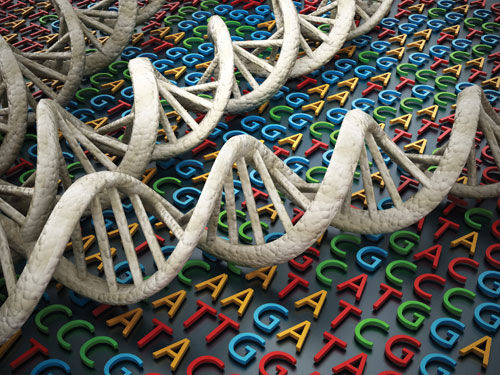A role for the gene ACTL6B, a component of the chromatin remodeling machinery, has been implicated in not one, but two, distinct neurodevelopmental diseases. The distinction between the diseases stems from whether the mutation in ACTL6B is dominant or recessive. The discovery started with an effort to diagnose two young siblings in Québec who were experiencing seizures and neurodevelopmental deficits.
The work, led by researchers at McGill University and the University of Montreal is published in the American Journal of Human Genetics paper titled “Mutations in ACTL6B cause neurodevelopmental deficits and epilepsy and lead to loss of dendrites in human neurons.”
The research group of Carl Ernst, PhD, a researcher at the Douglas Research Centre and an assistant professor in the department of psychiatry at McGill University made induced pluripotent stem cells (iPSCs) from the toddlers’ skin cells. In comparison to wild type neurons, the neurons from the siblings did not develop properly. The deficit was attributed to a mutation in ACTL6B, a component of the chromatin remodeling machinery including the BAF complex and an epigenetic regulator implicated in neuronal development.
After hearing a lecture by Ernst on his work on ACTL6B, Philippe Campeau, MD, a medical geneticist at CHU Sainte-Justine Research Center at the University of Montreal, who was studying ACTL6B mutations identified in two families as part of an epilepsy genome study, knew that the two should combine their efforts. In search of more information, Ernst and Campeau reached out to peers in over 10 countries, and soon found similar isolated cases throughout the world.
The authors write that 10 individuals “harbored bi-allelic mutations and presented with global developmental delay, epileptic encephalopathy, and spasticity” and another 10 with de novo heterozygous mutations “displayed intellectual disability, ambulation deficits, severe language impairment, hypotonia, Rett-like stereotypies, and minor facial dysmorphisms (wide mouth, diastema, bulbous nose).” Nine of these 10 unrelated individuals had the identical de novo mutation (Gly343Arg.)
“That’s when we knew that we were looking at a newly identified genetic disease,” says Scott Bell, a PhD student in the Ernst lab and lead author of the study.
“This was very surprising,” says Justine Rousseau, PhD, a research associate at CHU Sainte-Justine Research Center and who was involved in the study. “It provides very strong evidence that there are in fact two separate neurological genetic diseases caused by mutations in the same gene, ACTL6B.”
Further study included engineered knock-out of ACTL6B in human neurons, which resulted in dendrite development deficits. The authors found that “whole-transcriptome analyses and whole-genomic profiling of the BAF complex in wt and mutant ACTL6B neural progenitor cells and neurons revealed increased genomic binding of the BAF complex in ACTL6B mutants, with corresponding transcriptional changes in several genes including TPPP and FSCN1, suggesting that altered regulation of some cytoskeletal genes contribute to altered dendrite development.”
Ernst noted that new technology is making it easier for scientists to study both rare and neurodevelopmental diseases. “We’re very happy about this work because concerned families with this disease have, for the first time, a means to understand the problems affecting them,” Ernst said. “The tools we used also provide further evidence of the crucial role ACTL6B plays in brain development and this needs to be further investigated.”



